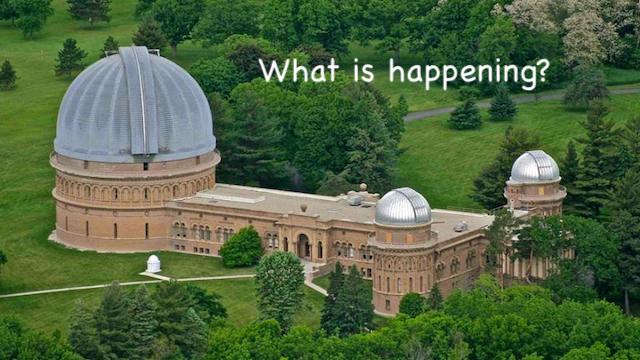SURPRISING STUFF
Yerkes Observatory will soon reopen to the public, or at least they are saying that over in Williams Bay.
This historic landmark, which is located on Geneva Lake in Williams Bay, is rich in material and full of stories about the past. The observatory was founded by University of Chicago solar astronomer, George Hale, at just 24 years of age, and designed by Henry Cobb, a famed Chicago architect. After two years of construction, in 1897, it was dedicated by the University of Chicago and was a leading research facility for more than a century. The project was financed by a wealthy mass-transit industrialist named Charles Yerkes, hence the name Yerkes Observatory.
In 2018 the university claimed the facility had outlived its usefulness and closed it. The residents of the local communities responded to the university by coming together to find and raise the funds to purchase the observatory from the University of Chicago. In the end, the University agreed to hand over Yerkes to the Yerkes Future Foundation for a dollar. The fund drive was a great success.
There were two places Albert Einstein insisted he had to see on his first visit to the United States in 1921, with one being Yerkes Observatory. For years the observatory held the world’s largest refracting telescope, built by Hale. He later built three larger telescopes (all reflecting) elsewhere. Yerkes has hosted many famed guests, from Nobel Prize winners, NASA associates, and international astronomers alike. The library was almost as extensive and impressive as the telescope. By accident, a personal book containing Edwin Hubble’s extremely complex mathematical formulas and equations was found with its first page missing, and a notecard left in its place.
It turned out that NASA needed the page to take into space. The architecture and detail alone of the place could be a museum exhibit all on its own, with depictions of John D. Rockefeller, Athena (goddess of wisdom and war), signs of the zodiac, phases of the moon, and much more all built into its outer structure. It is all very impressive and includes vital pieces of history for all the local communities around the lake. The technology it took to build it alone is impressive and was way ahead of its time. The facility used to house the world’s largest elevator (before elevators on nuclear aircraft carriers were built larger), allowing astronomers access to the eyepiece from every angle possible.
With restorations well underway, although not yet viewable to anyone, the public might soon have access to all this rich history once again. Now owned by the Yerkes Future Foundation, that foundation has been focused on renovations since last year. The Yerkes is supposed to be opening by the summer of 2022 and the Geneva Shore Report will be standing by with expectant enthusiasm until that time. The foundation has hired a tour coordinator and is taking reservations for weddings and other events. Visitors come for the landscape, trails, architecture, history, programs, the telescope, and more.
Once Yerkes is re-opened it will be a museum, but not only a museum. There will be exhibits, interactive displays, a science playground for families, and new programs, possibly including a Sci-Fi film festival. It has been a long time coming, but the future of Yerkes may be looking a bit brighter than it has since the foundation took over.









